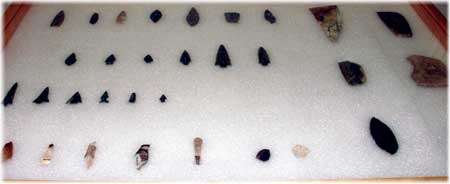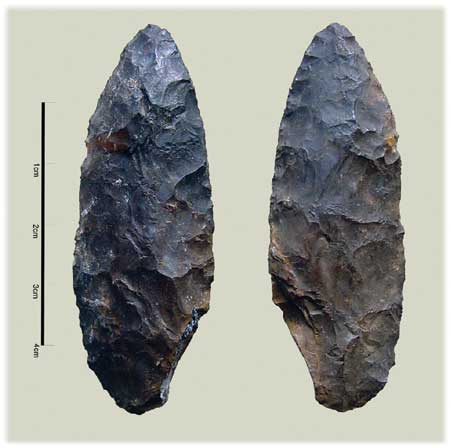|
CULTURAL RESOURCES
Links To The Past - Museum and
Archives
The Marblemount Curation Facility is a
multi-park repository for the museum collections from North Cascades
National Park Service Complex, Ebey's Landing National Historical
Reserve and San Juan Island National Historical Park. The combined
collections total over two million objects and are rapidly growing in
direct proportion with inventory, monitoring and research activities.
Resources for the three parks can be viewed at the North Cascades
National Park Visitor Center in Newhalem, the American Camp Visitor
Center on San Juan Island and the Burke Museum on the University of
Washington campus in Seattle. To increase access to museum resources,
images and information will be added to the NPS websites that showcase
national park collections.
The museum collections are divided into three
main areas: natural history, cultural resources, and archival
collections. The natural history collections comprise biological and
geological specimens. The herbarium includes vascular plants collected
from alpine habitats to San Juan Island prairies. The nonvascular
specimens inventory mosses, liverworts, lichens and hornworts of the
upper Skagit River. Reptiles, amphibians, fish, birds and mammals are
the backbone of the vertebrate collection. The facilities also include
macro invertebrates collected in the inventory of riparian
areas.


Objects from collections in
the Marblemount Curation Facility. Top: Stone tools. Arranged
by age, the arrowheads above show an increase in the level of
intricacy over time. In the bottom row are specialized tools
and to the right are larger tools made from various stone
types. Below: One of many botanical samples. Arnica collected
near Washngton Pass in 1972.


|
The cultural museum collections include both
prehistoric and historic objects. The prehistoric objects provide
valuable information about Native American life in the mountains of
North Cascades. The historic artifacts document early exploration and
settlement of the area, fishing, trapping, logging, and mining in the
mountains. The extensive archival collection includes archeological
project documents, historic records, park administrative documents,
resource management records, maps, drawings, documents associated with
natural resource studies and inventories, photographs, reports, oral
histories and electronic media.
The museum collections serve as scientific and
historical documentation for the parks' resources. They provide baseline
information for park planning, management activities, research and
interpretive and educational programs. NPS museum collections preserve
and protect the nation's natural and cultural heritage for future
generations.
www.museum.nps.gov
www.cr.nps.gov


Spear point from one of the
high elevation sites which dates between about 8,000 and 5,000
years old.
|
High Elevation Site Survey
The extensive sub-alpine terrain of the
Pacific Northwest high country is an attractive landscape of forests,
meadows and lakes. When we visit this setting, 5,000 to 7,000 feet or
more above sea-level, we might hike or camp for a short period, but it's
hard to imagine living in such a harsh, remote environment.
Archeologists, however, recognize that people have been utilizing these
higher elevations for thousands of years.
In 2001, archeologists from North Cascades,
Mount Rainier and Olympic National Parks began working together on a
three-year, high elevation archeological survey. Before the onset of
this project, less than 5% of the high elevation terrain in the three
Parks had been surveyed for archeological resources. The research
partnership allows archeologists to compare the influence of different
sub-alpine environments on sites and artifacts across the three mountain
parks of the region.
This ability to share and compile databases
allows the survey results to reveal how differences in locale shaped the
settlement and subsistence strategies of native peoples who lived in or
visited these mountainous areas. For instance, by looking at the
variation in stone tool materials in relation to geological source
areas, researchers can infer trade and travel routes and major resource
use areas. Even the physical qualities of the different tool stone types
influenced the kinds of tools made and the uses they were put
to.
So far, this archeological effort has resulted
in the discovery of over twenty previously unknown prehistoric sites,
three historic sites, and dozens of newly discovered artifacts. Some
artifacts appear to date to at least the mid-Holocene, about 7,000 or
more years ago. These discoveries give archeologists a better
understanding of early life at higher elevations and allow them to share
with us a new appreciation of our region's long involvement with human
groups.
|
